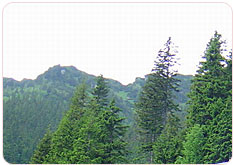
Juniper Bonsai Trees
Juniper bonsai trees can be propagated outdoors. You can make them as wonderful displays at the same time. Growing juniper bonsai trees is very manageable, and even a beginner in bonsai cultivation can handle all the care and maintenance required by the juniper bonsai trees. Coniferous trees can be used to make lovely bonsai specimens, and among the most popular of conifers for bonsai is the juniper. The hugely popular juniper bonsai tree has over 50 varieties that can be found all over the world. Junipers are also one of the easiest bonsai trees to take care of, hence their popularity, particularly among novice bonsai growers. The juniper bonsai trees can be grown both indoors and outdoors, nonetheless, poor humidity, lack of decent light, and lack of a dormant period will ultimately kill them. Juniper bonsai trees will tolerate short periods of being inside but if you really want them to thrive then keep it outside.
Juniper bonsai trees have two distinctive types of foliage that they display at different stages of their life. Young juniper bonsai trees have foliage that is like needles, and when they mature the foliage is more scale-like. Foliage will range in color from blue-greens to light-greens, even showing silver or gold hues on occasion.
Sunlight
It is best to expose your juniper bonsai trees to direct morning sunlight and place it on a shaded area during midday and afternoon to prevent it from getting afternoon sunlight. Afternoon sunlight is just too intense for your juniper bonsai trees, unlike morning sunlight. Morning sunlight has low intensity and it would not cause any harm to it. Juniper bonsai trees can thrive to bright sunlight, and you can expose them up to four hours. If you allow too much sun exposure this can cause weakness to the juniper bonsai trees, and can probably lead to dehydration which is very deadly.
Soil and Bonsai Pot
When choosing a soil for your juniper bonsai trees, you should purchase a mixture of soil that has a good draining quality. You can purchase a good soil mixture from garden centers and nurseries. You can also make your own soil mixture as long as you will use soil components that will still promote drainage. A good bonsai pot for your juniper bonsai trees should have adequate drainage holes at its bottom. The drainage holes will allow the excess water from the soil to spill out, and this will prevent clogging of water inside the pot. When excess amounts of water have remained in the pot, it can drown your juniper bonsai trees, which will eventually lead to rotting of its root system.
Water
Watering your juniper bonsai trees is very important to maintain its hydration status. If you have supplied lesser amounts of water, it will not satisfy the water requirement of your little tree and this will compromise its normal growth and development. Giving too much water is bad as well because this can cause root rotting. Ideally, you should water your juniper bonsai trees during morning to allow absorption of water, and the soil will get dry at evening. But when you give water during afternoon, the soil will not dry out until the evening, and this will put your bonsai tree at risk for developing fungal infection.
Fertilizer
You should use a high quality fertilizer that is primarily composed of nitrogen, phosphorus, and potassium with equal parts. It should be a mild organic fertilizer. You need to apply this every spring season, the season wherein the growth of your juniper bonsai trees is at its peak. But when the fall season comes, the fertilizer that you should use must contain less nitrogen. During winter months, allow your juniper bonsai trees to go through the dormancy period and the application of fertilizer is not needed at this time. Another important thing you should remember is that when your bonsai is weak, you must never give fertilizer.
Use a high nitrogen fertilizer in the spring and fertilize every three weeks, then use a more balanced fertilizer during the summer months, and then reduce the nitrogen for fall fertilizing. A diluted, half strength fertilizer will keep your roots from being damaged if you are using a chemical fertilizer.
Repotting and Root Pruning
You should perform root pruning cautiously to prevent causing injury to the fine roots of the root system. Repotting for younger juniper bonsai trees and as well as to bonsai that is planted to a small container should be done once in a year. If you have an older bonsai or if you have sowed it in a big container, you should repot it once in 2 to 4 years.
Read more:
tips on caring for your juniper bonsai trees
growing juniper bonsai trees for beginners and professionals
Under Creative Commons License: Attribution



